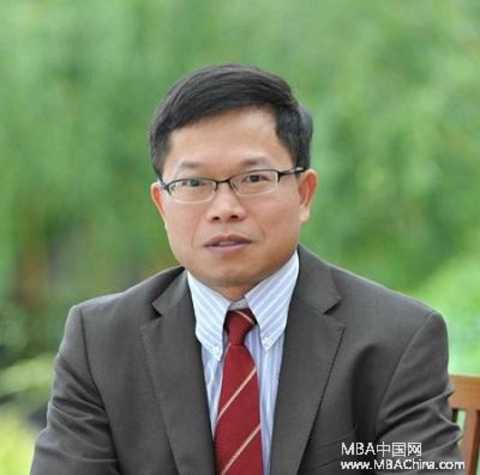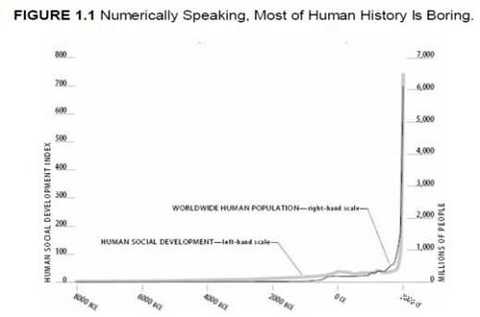[MBA China (Reuters) - Beijing at 10:30 on May 25, Wuzhen "man-machine war" AlphaGo (Alpha Dog) and Ke Jie will continue to carry out the second contest. Ke Jie showed the strongest strength of the human chess player. At one time, he showed victory and was praised by Hasabis as “extending the limit of AlphaGoâ€. But in the end, it was still a shortfall, and the game reached 155 hands. Ke Jie recognized the negative. The highly-respected human-machine Go war has once again triggered the world's thinking on artificial intelligence. The Fudan University EMBA program specially selected this article, please ask three Fudan Guanyuan professors to share with us, AlphaGo and Ke Jie "human-machine war" wins and losses. More thinking. Editor's note From May 23rd to 27th, the Go AI program AlphaGo (Alpha Dog) once again played against the world's top players. However, the father of AlphaGo (Alpha Dog), Jemis Hasabis, said, "We invented the Alpha dog, not to win the Go game." In 2016, China's artificial intelligence field has made great progress, and related information construction and intelligent manufacturing technology have been comprehensively improved. Artificial intelligence will be a technology to change the global economy. How to understand and grasp the opportunity before the critical point erupts, the sharing of the three professors in this round of micro-round tables will give you more inspiration. Is our work really replaced by robots? Let's look at a picture first. It describes the development of human society in the recorded past 10,000 years. The figure depicts two indicators, one is the Human Development Index and the other is the total human population. This graphic depicts an astonishing fact: the vast majority of the past 10,000 years of development, the overall development of human society seems unremarkable; in almost 9800 years, the development of human society is almost a Horizontal line. But more than two hundred years ago, this horizontal line suddenly showed an almost 90 degree turn. The time when this big turn began to happen coincided with the time when the steam engine appeared. In the past two hundred years, human beings have soared in the blue sky and galloped the sea, achieving unprecedented feats, and the total population of the earth has risen from around 300 million to 7.5 billion today. Obviously, human intelligence and physical strength have not changed substantially during this time. What caused this day's ups and downs is the massive creation and use of machines by humans. This era is called the first machine age, and the power of the machine replaces the power of human muscles. Today, with IBM Watson, Google Driverless, Amazon Kiva, Deepmind AlphaGo, etc., we have quietly entered the second machine era. Now, machines can not only replace the power of human muscles, in some ways, these thinking machines have transcended the power of the human brain. In March of last year, the battle between AlphaGo and Li Shishi, the world's top player in the world of chess, pushed the situation of this man-machine battle to the peak of the world's attention. Go is a super-intellectual game that was generally considered to be impossible to be overcome by machines a few years ago. After ten years of hard selection, training and competition, the top human masters have no confidence in winning this new generation. . The machine is so powerful, and its evolution has been as amazing as science fiction. A natural worry is that in the future, will our work be replaced by robots? Obviously, no one can give a definitive answer to this question. More than two hundred years ago, when modern machines first appeared on a large scale, people were worried that there was nothing to do. In fact, people are too concerned. It is true that many of the original work has disappeared, but new and more work is constantly emerging. After all, machines are not omnipotent. However, today's machines are getting smarter and smarter than the first generation machines. Many of the streamlined programmatic work is replaced by high probability events, and many have already happened. In fact, some scientists and technology leaders are very worried about the future. Physicist Hawking has repeatedly warned of the threat of artificial intelligence. Google's Kurtsville also predicted that robots will be smarter than humans after more than a decade. We cannot accurately predict the evolution of future machines and the changes in the world. But the new change has already appeared, this is a convincing thing. What we can do is to learn how to deal with this change. At this point, the proposals put forward by Brinjolsson and McFee in "Second Machine Age" are worthy of our reference: "Everyone should have more adaptability and flexibility in their career pursuit, ready Feel free to leave from areas that are easily automated and actively seize opportunities in areas where machines can only supplement or strengthen but not replace human capabilities." This coincides with an advertisement that has recently been seen on the subway: "Every time, everyone is quietly rewarded for learning." What kind of work does artificial intelligence replace? "Artificial Intelligence" is an interesting word because the layman is more concerned with "artificial" and the layman prefers to discuss "intelligence." Twenty years ago, IBM’s “dark blue†defeated chess world champion Kasparov. At the time, in the mass media, articles about how artificial intelligence would change or control humans emerged endlessly. However, for scientists who create “dark blueâ€, “dark blue†is an innovation in software engineering and parallel computing that improves the efficiency of traversal search. Twenty years later, when Google’s “AlphaGo†took the world’s Go players one by one, people once again discussed the dramatic changes that artificial intelligence would bring to human society. This time, the public seems to have more evidence of the "artificial intelligence" point of view. Because computers have made great progress in face recognition, machine translation, speech recognition, and automatic driving, it seems that computers can really "think" like humans. These areas of progress have one thing in common, that is, they can be abstracted into a statistical forecasting problem. For example, playing chess is to predict the probability of winning both sides in a given board state. Autopilot is to synthesize various types of sensor data to predict the location of outside vehicles and pedestrians. The wave of artificial intelligence is that scientists have found smarter and more efficient ways to establish the connection between input data and output, which greatly improves the accuracy of predictions. However, the prediction problem that can be solved by such methods must meet at least the following conditions: First, it can be quantified. For example, you need to have clearly quantifiable inputs and outputs. Second, the structure of the problem is relatively stable. For example, a very small change in input does not cause a huge difference in results. Third, the appropriate data. Whether it is historical data collected, or data generated through simulation or experimentation, appropriate data is needed in the modeling process to tune the parameters of the model or to distinguish the quality of the model. Of course, with the advancement of scientific research and cognition, many problems that originally seemed to not satisfy these conditions are slowly becoming solvable. If these conditions are met, smart scientists can improve the accuracy of the prediction by designing and adjusting algorithms. So, what impact does this “artificial intelligence†prediction technology have on our work? According to the above analysis, if the work content is quantifiable, the structure is stable, and relevant data is widely available, predictive technology will reduce the value of this part of the work skills. The ability to deal with difficult-to-quantify, unstructured problems and the value of having unique data will increase dramatically. For business managers, the decision-making environment they face is complex, variable, and uncertain. Asking appropriate questions based on specific contexts, identifying what issues are “predictableâ€, analyzing the value of “artificial intelligence†algorithms, understanding the drivers and capabilities of stakeholders, and leading companies to make changes, these skills will become increasingly important . Department of Information Systems and Information Management, School of Management, Fudan University Artificial intelligence can be used as an aid and supplement to human decision-making The development of artificial intelligence is embodied in three levels: imitating repetition, summing up features and reducing the reasons behind the features. One of the strongest functions of a computer is memory. With memory, it can be repeatedly imitated. In different environments, people's behavior will always change a little. The computer can further summarize the characteristics of inductive behavior on the basis of multiple repetitions of records. The rule of adjustment in the environment; the key is the most powerful third step. The computer not only records the behavior of people in all scenes, but also summarizes the behavioral characteristics of people in different scenes. It further explores the reasons and ideas of people doing this, that is, behind the features. Causes and laws. In fact, artificial intelligence was proposed in the 1950s and 1960s. It has developed rapidly in the last two years, and it has quickly developed into the second step. It has entered the third step from a few years ago, and its ideological development is not great, even Now, because AlphaGo defeated the world's top Go expert and the hot artificial intelligence technology convolutional neural network, its algorithm was also proposed in the 1950s and 1960s, and was widely implemented and applied in the academic circles in the 1990s. If you are interested, you can take a look at a paper published in Science 2015, which is about how to let computers learn the handwriting of people. When we write a word, the computer can be perfectly copied. When we write more words, the computer can summarize the characteristics of our writing, that is, handwriting, according to the words written. This is the third time that the paper was introduced. The step is amazing. Now it is also called Black Technology. It means that we have not written this word, but the machine can write this word, and it is almost exactly the same as what we write later. The biggest difference between this and the second step is that we have never written these words, how does the computer know? Although the study is not as famous as the dog, we are more excited about it in research and believe that the study may be epoch-making because he passed the Turing test. There have been two reasons for this for decades to lead to the spread of artificial intelligence. First, the continuous increase in computing power and the continuous reduction in costs, the public can have the ability to process data and computing. Another important factor is that the data is greatly available. Because artificial intelligence algorithms (whether summarizing features or summarizing features), it is necessary to have enough records about human behavior to complete. Specifically, with a small amount of data can be repeated, with a relatively large amount of data can be summarized, on the basis of a comprehensive enough, we can further summarize the rules behind. About 20 years ago, a brother who was intern at Microsoft told me that they need a dollar for a person to pronounce a word, but now? At any time, hundreds of millions of people express their opinions in various ways through words, audio, images and videos. Every day, billions of data are generated. It can be obtained by standard processing of text, audio, images and video, at a cost of data collection and processing. Simply estimating the cost in tens of thousands means that the cost of these data has dropped to one in ten thousand. The reduction in cost also means the feasibility of achieving commercial value. As these aspects of scientific research have a good reserve, after the economics meet practical requirements, the current upsurge is quickly formed. But even with artificial intelligence, the way it is applied can be quite different. First of all, we can consider the efficiency improvement brought by the progress of artificial intelligence, and the corresponding direct applications, such as online commentary and public opinion monitoring. This type of business model has been applied for many years, and its operational efficiency depends greatly on the emotion of the algorithm on the content of the comment. Identify correct rates; such ideas can have direct value in text, image, audio, and video applications, such as dating, advertising, and more. Second, we can consider the impact of artificial intelligence on traditional business models—especially those that have knowledge intermediaries due to professional barriers—such as health care, finance, and so on. With the breakthrough of artificial intelligence in understanding the rules behind the features, combined with the enhanced computing power and the availability of a large amount of data, it shows very attractive investment value in the memory, summary and learning ability of professional knowledge. In other words, it can create a large number of low-cost professionals with sufficient knowledge in a short period of time, avoiding the long-term cultivation of people, the constant confrontation of forgotten knowledge, and the difference in learning and summarizing ability. Even if it is not complete due to current ethics, regulatory constraints or incomplete capabilities, it can not be used as a substitute for human decision-making. Copyright Notice: This article is reproduced from Fudan Guanyuan. If the original author does not want to use the relevant materials on this website, please inform the website in time, we will deal with it in the shortest time, contact the electricity. Our firm is additionally One of the Powerful Company In the 304 Stainless Steel circle plate area With regarding 15 years. 304 stainless steel circle plate, circle stainless steel, round steel circle, ss 304 circle, circle stainless steel sheet Ningbo Ningshing Trading Group Inc. , https://www.ningshingonline.com




As one of the leading foreign trade gateways of Chinese circle stainless steel sector, basing on a foundation of common advantage and win-win concept.
Our firm has actually established extensive and pleasant company teamwork in overseas market, giving best support to the expansion of business.
Our round steel circle collection consist of Cold and hot Rolled 200, 300, 400 series, with brands like TISCO, LISO, Bao Steel, Tsingshan, Wuhang, ESS, and so on, the kinds include ss 304 circle, coil, sheet, rod, strip, in addition to some semi-finished item like circle, pre-pressed sheet, and so on.
We have actually been provided ISO9000/14000 because year 2005. We are specifically strong in South-east Asia market, and we have actually grown to be a good distributor in Africa, Middle East location and some European countries.
Our circle Stainless Steel Sheet organization always sticks to four service concepts: premium quality product to win the market; competitive price to draw in clients; superb solution to get credibility; widely known brand to advertise worth. We are anticipating accept you.